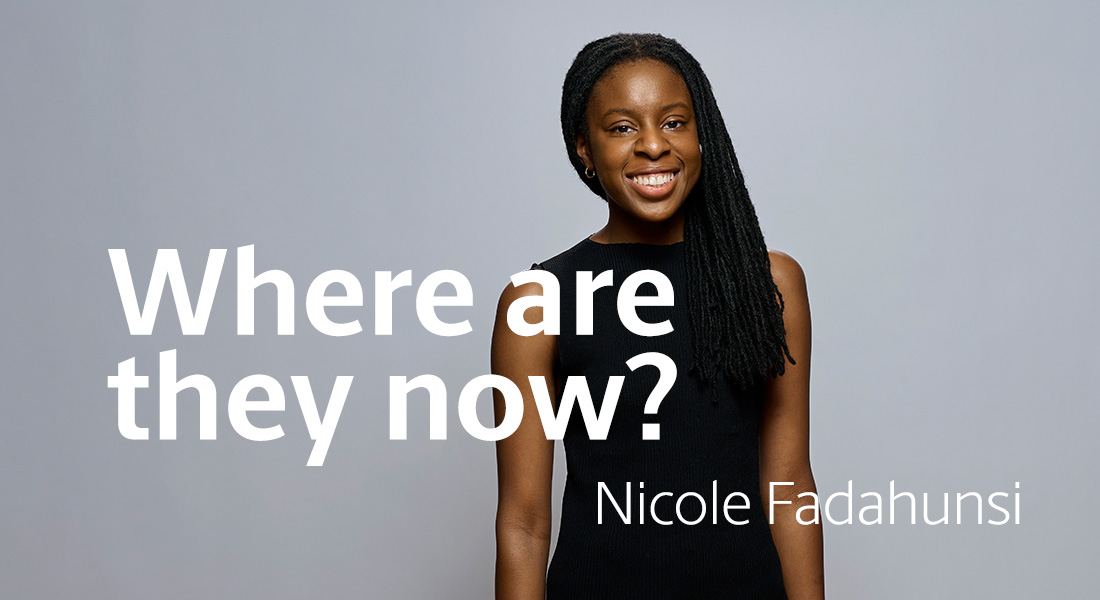“I reflected on what I enjoy doing day-to-day and aligned that with the opportunities I came across”
Nicole Fadahunsi came to Denmark from the UK to do her PhD in neuroscience with the Clemmensen Group at CBMR. Last year, she joined Lundbeck as a scientist in the department of circuit biology. We talked to Nicole about carving the right career path and the differences between working in academia and in industry.

What initially sparked your interest in science?
Ever since I was young, I had a natural curiosity about the human body and how it works. There are so many fascinating processes occurring that we can’t see, and biology is a window into all of them.
What did you study in the UK?
I studied neuroscience at the University of Manchester. I wanted to study medicine, but my initial application was not accepted. Another route into medicine in the UK is to do an undergraduate degree first and then graduate in entry medicine. This was the path I hoped to take when I decided to study neuroscience. But my three years at university were so fantastic that I wanted to continue doing basic research.
Why did you decide to study in Denmark?
By the end of my undergraduate degree, I wanted to do a PhD. I saw an advert for a PhD programme in Copenhagen, recruiting international students to four different research centres, CBMR being one of them. I had a keen interest in metabolism, and after reading more about the research at CBMR, I knew it was the exact direction I wanted to take.
What was your PhD project?
My PhD was focused on understanding how the brain is involved in the regulation of appetite and body weight. Specifically, I investigated proteins involved in synaptic plasticity that have an association with body weight, identified from human genetic studies. The hope was to better understand this association and assess whether targeting these proteins could be a strategy for the treatment of obesity. We identified two proteins, PSD-95 and PICK-1, that upon pharmacological inhibition, induce weight loss in a mouse model of obesity. The results were published earlier this year.
How did you become a Visiting PhD Student at the University of California, San Francisco (UCSF)?
Something I valued about doing a PhD in Denmark is that it’s mandatory to do an exchange of research environment. This means spending a few months working in a different lab, usually outside Denmark. I connected with a research group at UCSF because they were working with a technique I was interested in called fiber photometry. Fiber photometry allows the measurement of neurotransmitter activity in the brain. I asked if I could come for a few months to learn this technique, and they said yes.
You joined Lundbeck as a scientist last year – how did that come about?
After learning about fiber photometry at UCSF, I wanted to continue working with the technique, so I looked for opportunities where that would be possible. I ended up just searching “fiber photometry” on LinkedIn and this position at Lundbeck was one of the first things that came up. This was surprising, as I was unaware it was a technique used in an industry setting. So, I had to go for it.
Can you tell us a bit about your role at Lundbeck?
As a scientist, I am mainly hands-on in the lab using photometry to answer project-specific research questions. At Lundbeck, we're focused on developing drugs for treating brain diseases, and that's quite wide-ranging, which means I can work across many different project types and disease indications.
How do your skills as an academic come into play in an industry setting?
I primarily use practical skills - how to conduct experiments, resolve experimental challenges, as well as time management. But some of the soft skills have also helped me, such as learning how to communicate more effectively.
From your own experiences, what are some of the differences between working in academia and working in industry?
The key thing that stands out to me is that in industry, I'm working as part of a large team, as a collaborative effort. I was fortunate to have many collaborations as part of my PhD, but overall, much of the work of an academic is self-guided. It was challenging to adapt to a different way of working, but now I enjoy the dynamic.
What is the best piece of career advice you’ve ever received?
The best career advice I have received was to keep open-minded and not fixate on one specific career path. I was once convinced that I wanted to become a medical doctor, but if I had stayed on that path, it might not have been right for me. Instead, I reflected on what I enjoy doing day-to-day and aligned that with the opportunities I came across, which led me to find the path I’m on today.
Finally, what ambitions do you have for your future career?
I really enjoy what I do right now, so I would like to continue on the scientist path, conducting research and generating data. There are so many new techniques emerging that allow us to study neural circuits with high precision and study brain function in health and disease, that I would like the opportunity to work with. I would also like to gain more experience in project management and learn how to contribute to drug discovery efforts at a different level.
This interview was edited for clarity and concision.
